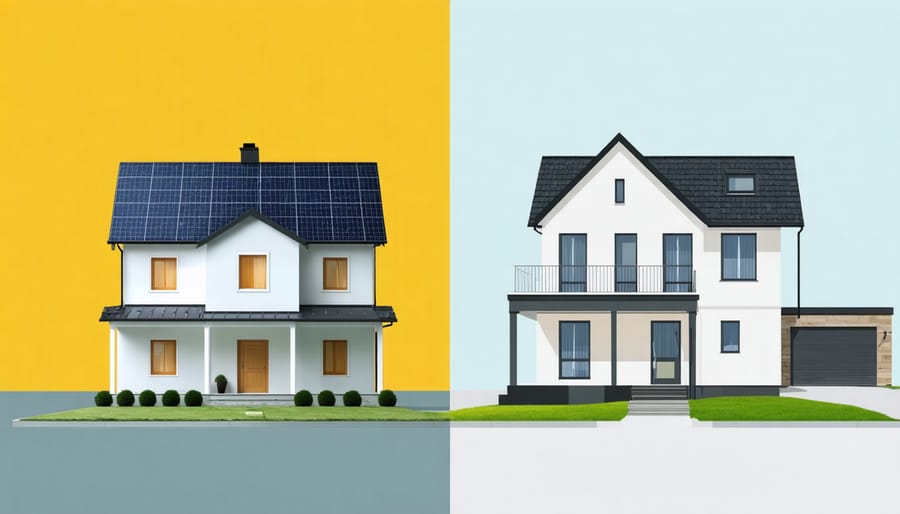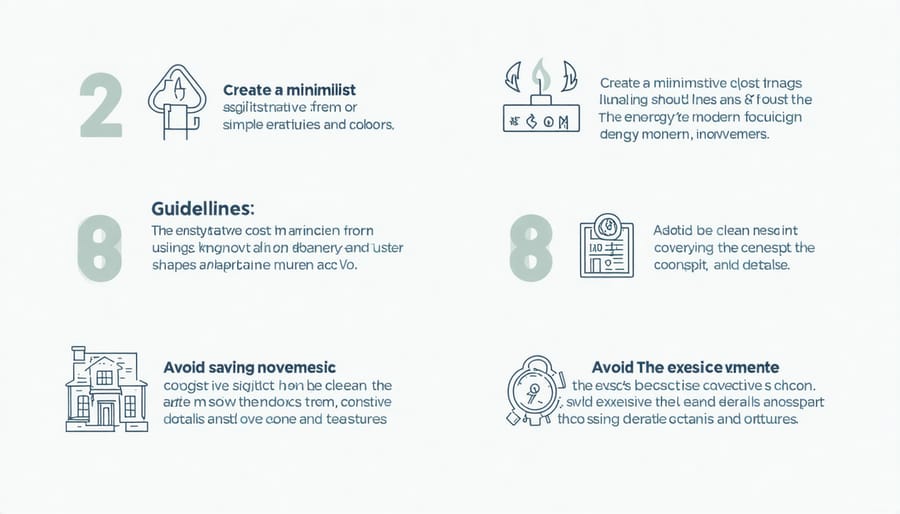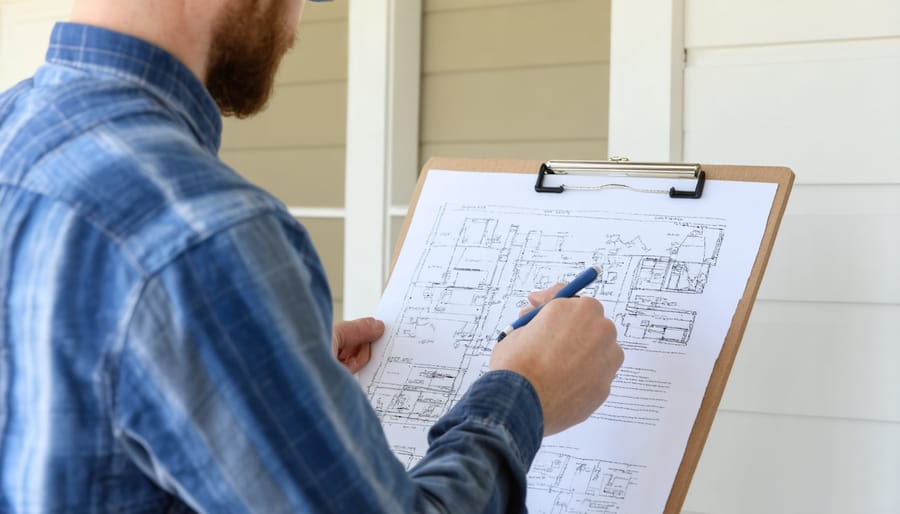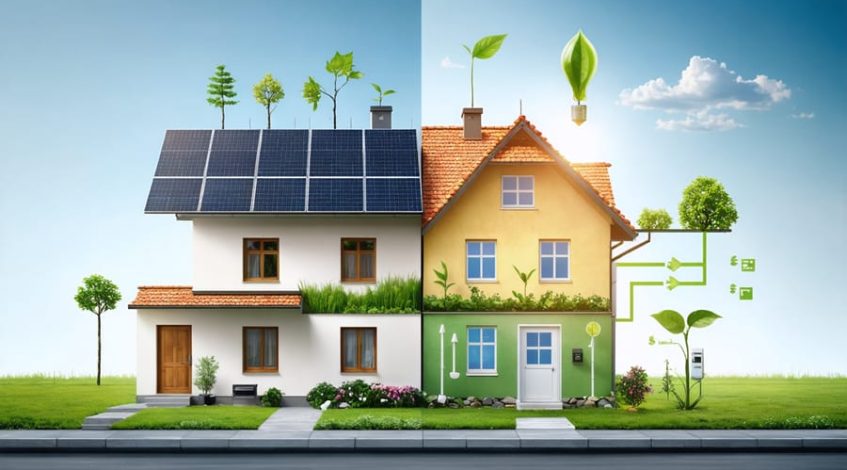VA Energy Efficient Mortgages (EEMs) empower veterans to finance crucial home energy improvements while securing their VA-backed home loan. This innovative financing solution allows service members to invest up to $6,000 in energy-efficient upgrades, from high-performance HVAC systems to advanced insulation, all without requiring a down payment. By combining the purchase or refinance of a home with energy-efficient improvements, veterans can reduce their monthly utility costs while increasing their property’s value – creating a dual benefit of environmental stewardship and financial savings.
The program represents a strategic approach to homeownership that aligns with both military families’ needs and national energy conservation goals. For eligible veterans and active-duty service members, VA EEMs offer a practical pathway to sustainable homeownership, potentially saving thousands annually in energy costs while contributing to America’s energy independence. Whether purchasing a new home or refinancing an existing property, this specialized mortgage option transforms energy efficiency from an aspirational goal into an achievable reality.

How VA Energy Efficient Mortgages Work
Qualification Requirements
To qualify for a VA Energy Efficient Mortgage (EEM), veterans must first meet the standard VA loan eligibility requirements, including satisfactory service history and discharge status. Additionally, applicants must obtain a Certificate of Eligibility (COE) and meet credit score requirements, typically a minimum of 620, though this may vary by lender.
The property must be the veteran’s primary residence and undergo a professional energy audit to identify potential improvements. The audit should demonstrate that the proposed energy-efficient upgrades will generate cost savings that exceed the investment within the first few years.
The maximum amount available for energy improvements through a VA EEM is $6,000, or up to $3,000 if the improvements are based solely on the documented cost savings. Borrowers must also demonstrate sufficient income to cover both the base mortgage payment and the additional amount for energy improvements.
Eligible improvements must be permanent and considered standard for the area. Common qualifying upgrades include HVAC systems, insulation, solar panels, weather stripping, and energy-efficient windows. All improvements must be completed within six months of loan closing.
Energy Improvement Limits
VA energy efficient mortgages allow qualified borrowers to finance up to $6,000 in energy improvements as part of their VA loan. This amount can be used for a variety of approved upgrades, including insulation, solar panels, and HVAC energy improvements. The improvements must be cost-effective, meaning the projected energy savings must exceed the cost of improvements within their expected lifetime.
For improvements exceeding $6,000, borrowers must either pay the difference out of pocket or seek additional financing options. All proposed improvements must be validated through a home energy assessment conducted by a qualified professional. The assessment should demonstrate that the improvements will result in meaningful energy cost reduction.
Eligible improvements typically include weatherization, energy-efficient windows and doors, high-efficiency heating and cooling systems, and water heater upgrades. Smart home energy management systems and LED lighting retrofits may also qualify when part of a comprehensive energy improvement plan. The VA requires that all improvements meet current energy efficiency standards and are completed by licensed contractors.
Benefits of VA Energy Efficient Mortgages
Financial Advantages
VA Energy Efficient Mortgages offer substantial financial benefits that extend well beyond traditional home financing. Homeowners can experience immediate cost savings through reduced monthly utility bills, thanks to the implementation of smart energy management systems and efficiency improvements. These savings typically range from 25% to 50% of previous energy costs, depending on the implemented upgrades.
The program’s structure allows veterans to finance energy improvements without increasing their down payment, while the reduced utility costs often offset the slightly higher monthly mortgage payments. This creates a positive cash flow situation for many homeowners. Additionally, these improvements typically increase the property’s market value, providing long-term equity benefits.
The financial advantages are further enhanced by potential tax incentives and rebates available for energy-efficient home improvements. When combined with the VA’s competitive interest rates and limited closing costs, the overall financial package becomes particularly attractive for eligible veterans seeking to maximize their home investment while minimizing their environmental impact.

Property Value Benefits
VA energy efficient mortgages significantly enhance property values by funding sustainable improvements that modern homebuyers increasingly prioritize. Properties with energy-efficient features, including home energy storage solutions, typically command higher resale values and attract more potential buyers in today’s environmentally conscious market.
Studies show that homes with energy-efficient upgrades can sell for 2-6% more than comparable properties without these improvements. This premium reflects both the immediate cost savings from reduced utility bills and the long-term value of sustainable infrastructure. Energy-efficient homes also typically spend less time on the market, as buyers recognize the advantages of lower operating costs and improved comfort levels.
Furthermore, these improvements future-proof properties against rising energy costs and evolving building codes. As energy efficiency standards become stricter and utility rates continue to climb, properties with existing energy-efficient features maintain their competitive edge in the real estate market, providing veterans with a solid investment in their homes’ long-term value.
Application Process
Applying for a VA Energy Efficient Mortgage involves a systematic process that requires careful attention to detail and proper documentation. Begin by obtaining your Certificate of Eligibility (COE) through the VA portal or your chosen lender to verify your military service status and eligibility for VA loan benefits.
Next, select a VA-approved lender experienced in Energy Efficient Mortgages. The lender will help you order a Home Energy Rating System (HERS) report or energy audit from a qualified professional. This assessment identifies potential energy improvements and estimates their cost and potential savings.
Once you have the energy assessment, work with your lender to determine which improvements qualify under the VA EEM program. Create a detailed list of proposed improvements and their estimated costs, ensuring they fall within the program’s maximum allowance of up to $6,000.
Submit your loan application along with the following documentation:
– Certificate of Eligibility
– Energy assessment report
– Contractor estimates for proposed improvements
– Current utility bills
– Income verification documents
– Credit history information
After submission, your lender will process the application and order a VA appraisal. The appraiser will evaluate both the property’s current value and the impact of proposed energy improvements. Upon approval, the funds for energy improvements will be held in escrow until the work is completed.
The final step involves coordinating with approved contractors to complete the energy improvements within the specified timeframe, typically 90-180 days after closing. Your lender will release the escrowed funds directly to the contractors upon satisfactory completion of the work.
Energy Assessment Requirements
To qualify for a VA energy efficient mortgage, homeowners must obtain a comprehensive home energy assessment from a qualified professional. This assessment, often called a Home Energy Rating System (HERS) evaluation, documents the current energy efficiency of the property and identifies potential improvements that could generate meaningful energy savings.
The energy assessment must include a detailed analysis of the home’s insulation, HVAC systems, windows, doors, and other components that impact energy consumption. The assessor will provide a written report outlining recommended improvements and their estimated costs, along with projected annual energy savings for each upgrade.
Documentation requirements include:
– A completed energy assessment report from a qualified professional
– Cost estimates for proposed energy improvements
– Projected energy savings calculations
– Certification that improvements meet VA energy efficiency standards
– Documentation of contractor qualifications
The VA requires that all proposed improvements demonstrate cost-effectiveness, meaning the total cost of the improvements should be offset by energy savings within the reasonable lifetime of the upgrades. Generally, the assessment should show that monthly energy savings will exceed the monthly increase in mortgage payments resulting from the energy improvements.
The energy assessment must be completed before the loan closing, and improvements typically need to be installed within six months of closing. Veterans should retain all documentation related to the assessment and subsequent improvements for their records.

Comparing VA EEMs to Other Energy Financing Options
VA Energy Efficient Mortgages offer several distinct advantages when compared to other energy financing options. Unlike traditional home improvement loans or personal loans, VA EEMs integrate the energy improvement costs directly into the primary mortgage, typically resulting in lower interest rates and extended repayment terms.
When compared to conventional energy improvement loans, VA EEMs stand out for their zero down payment requirement and more flexible credit requirements. Traditional home equity loans or personal loans often require substantial down payments and excellent credit scores, making them less accessible to many veterans.
PACE (Property Assessed Clean Energy) financing, another popular option, attaches to the property tax assessment and typically carries higher interest rates than VA EEMs. Additionally, PACE loans can create complications during property sales, while VA EEMs remain part of the standard mortgage structure.
FHA’s Energy Efficient Mortgage program offers similar benefits but may have higher insurance premiums and stricter lending requirements compared to VA EEMs. Conventional energy improvement loans typically require separate applications and closing processes, while VA EEMs streamline the process by combining everything into one loan.
For eligible veterans, VA EEMs often represent the most cost-effective financing solution for energy improvements, offering competitive interest rates, minimal fees, and the ability to finance up to $6,000 in energy-efficient improvements without additional underwriting requirements.
VA Energy Efficient Mortgages offer veterans a powerful opportunity to improve their homes while saving money on energy costs. By financing energy-efficient improvements through their VA loan, eligible veterans can increase their home’s value and reduce monthly utility expenses without significant upfront costs. The program’s flexibility allows for various upgrades, from HVAC systems to insulation, making it an attractive option for military families seeking sustainable living solutions.
Veterans interested in pursuing an EEM should start by contacting a VA-approved lender and scheduling a home energy assessment. Remember to gather necessary documentation, including your Certificate of Eligibility and energy audit results. With potential savings on utility bills and the environmental benefits of reduced energy consumption, VA Energy Efficient Mortgages represent a smart investment in both your home’s future and your financial well-being. Take the first step today toward a more energy-efficient home while leveraging your hard-earned VA benefits.

